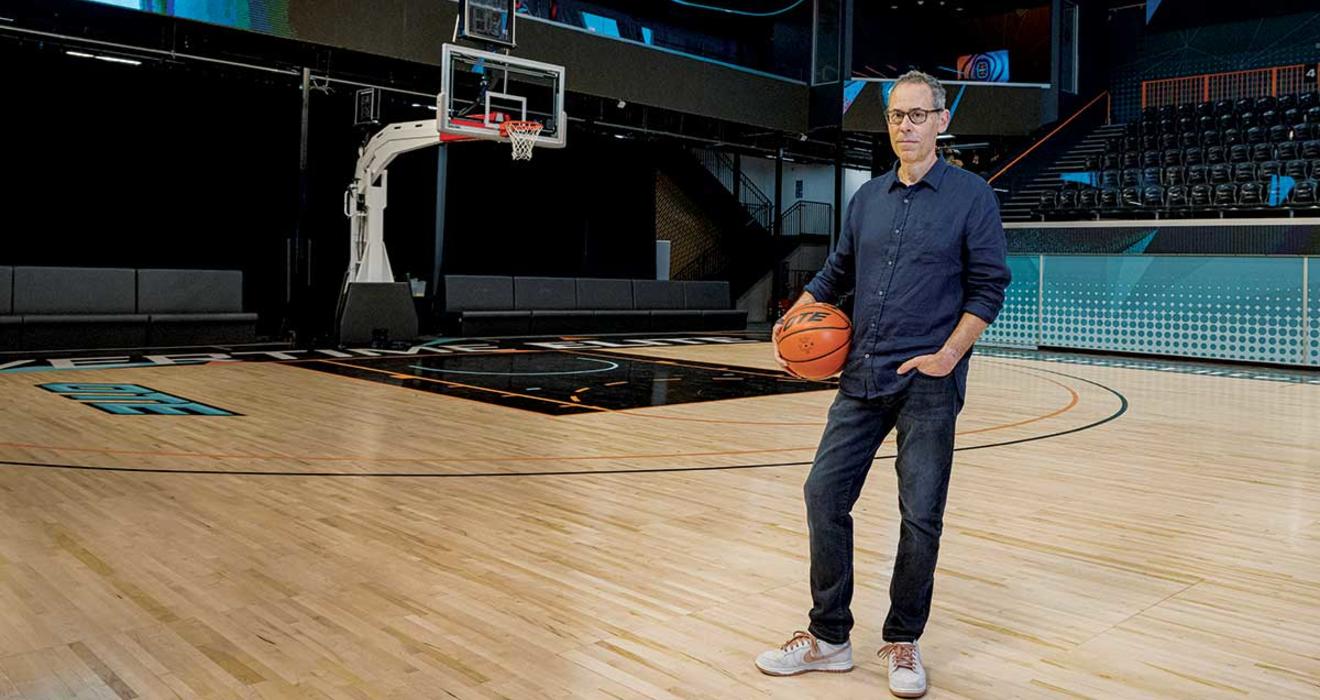
BACK IN 2013, as YouTube stars and Instagram influencers were beginning to emerge into mainstream consciousness, Dan Porter ’88 was hired by William Morris Endeavor to oversee the talent powerhouse’s digital efforts. WME (known today as “Endeavor”) needed to figure out how to turn these new celebrities into big businesses. It also needed to learn how to use the still-nascent social media platforms to amplify the brands of its existing clients, including actors, models, and athletes.
In meetings with professional sports leagues, Porter, a serial entrepreneur with three startups under his belt, started hearing something interesting: Young people weren’t that into sports.
To the clients, this spelled doom. If the 20-year-olds of today don’t become the middle-aged season-ticket holders and March Madness enthusiasts of tomorrow, revenues will dry up.
But to Porter, this gap spelled something else: Opportunity. Maybe, he thought, the issue wasn’t so much that Gen Z wasn’t interested in sports. Maybe it was just that they weren’t interested in the way it was being served up.
“Every generation wants its own thing,” he explains. Take the ways they discover music: First there was The Ed Sullivan Show. Then American Bandstand. Then MTV. And after that: Napster, Soundcloud, and Spotify. Each incarnation created its own aesthetic. A kid in the ’80s wasn’t going to watch Bandstand, but they absolutely were going to tune into the latest Madonna and Michael Jackson videos. “When I got to college, all I did was go into the basement of Campus Club and watch MTV for hours,” Porter says.
Sports haven’t changed much in the past half century. “You could watch Monday Night Football in 1975, go into a coma, and watch it 50 years later, and it looks exactly the same,” Porter says. Maybe it was time to try a new approach. “Somebody was going to figure out how to make sports relevant for this next generation,” he explains. “And I thought I could be that person.”
This despite the fact Porter isn’t “a huge sports person.” In college, he was known for his keyboard skills. He spent four years with the Princeton jazz band and weekends earning money playing piano at Faculty Club brunches. But Porter knew how to invent the future. In the 1990s, he became the first president of Wendy Kopp ’89’s paradigm-shifting Teach For America. After that, he helped run one of the first-ever online ticketing websites, and later he pioneered mobile games.
So in 2016, Porter and his co-founder, Zack Weiner, a sports media entrepreneur and, at 24, a member of the enigmatic demographic, launched Overtime — a sports network for the next generation.
What Porter and Weiner have built looks nothing like traditional sports media. There’s no website, no cable station, no single destination for its target audience. All of Overtime’s content goes out onto social platforms — TikTok, YouTube, and Instagram, mostly, along with Snapchat, Twitter, and Facebook. There’s no news, no stats, no games. And no video from the pros. (“The rights [cost] billions of dollars,” Porter says.)
Instead, it’s a slew of short- and long-form content made for viewers who didn’t just grow up digitially — they grew up inside of social media itself.
There are photos and short clips embellished with effects and graphics, along with captions penned in Gen Z-speak. Of amazing plays at high school games. Of trick shots by teenagers goofing around. Of LeBron James and his son on the sidelines at an Ohio State game. And longer clips of Overtime hosts doing brief, in-studio commentary, superimposed over dynamic background videos. And there are even longer, multi-episode series on YouTube, including “The Overtime Challenge,” featuring top high school players doing goofy drills and answering silly trivia questions; “No Limits with Jada Williams,” which follows the University of Arizona recruit and her La Jolla, California, high school basketball team; and “Hello Newmans,” a reality-style show about a Florida family with two teenage athletes.
“This generation’s idea of what is sports is way more expansive than [the] traditional idea that sports is only what happens when they blow the whistle to start the game and when they blow the whistle to end the game,” Porter says. The changing economics of production — inexpensive smartphones, user-submitted videos, custom technology to rapidly produce content, and free distribution online — has also cleared the way for Overtime to move into a space — high school sports — that had been mostly ignored by national media.
“I couldn’t show a touchdown in an NFL game, but I could show something about a [professional] player off the field, or I could show you dunking on [someone] on the bus with a funny caption,” Porter says. “It captured the essence of sports. … We built this whole oeuvre around culture, humor, and next-up athletes.”
More recently, Overtime has launched leagues of its own for aspiring NBA and NFL players. Overtime Elite, which premiered last year, is a year-round basketball program for 16- to 20-year-olds. It’s based out of a 103,000-square-foot arena and training center that Overtime built at a converted warehouse in Atlanta. This summer, the company launched OT7 for seven-on-seven football. Other leagues are in the exploratory stage, with an eye on sports with broad international appeal, such as boxing, tennis, MMA fighting, and golf.
Overtime’s ambition might seem somewhat of a gamble. Jeff Jordan, a backer from the vaunted Silicon Valley firm of Andreessen Horowitz, said learning about the plan for leagues was “a ‘gulp’ moment.” “We invested in a little Gen Z sports property, and all of a sudden we’re building basketball stadiums.”
But it’s a strategy that seems to be working. In just six years, Overtime has attracted 65 million followers across more than 80 channels it runs on social platforms. And in August, Overtime announced it had raised another $100 million on top of the $140 million it already had. The company is now worth half a billion dollars, and investors include Amazon founder Jeff Bezos ’86, the owners of Formula One, Brooklyn Nets star Kevin Durant, and 6 percent of active NBA players. “They are the belle of the sports ball because of this relationship with Gen Z,” says Jordan.
The funny thing about the enormity of what Porter’s accomplished is that none of it was part of the plan. Or, rather, there never was a plan — no finely honed blueprint for what the company would create. There was just an insight: There was a giant set of consumers no one was paying attention to. “I realized that if somebody could figure out how to build a really powerful brand that could reach this audience about sports, that could be worth something,” Porter says.
And he was right. But the process of getting there wasn’t a given. It has required the mindset of a startup founder, something Porter discovered he had an aptitude for in his years after Princeton: one part creativity, one part risk-taking, and one part willingness to challenge the status quo. All fueled, in Porter’s case, by a knack for improvisation that he chalks up to a childhood playing jazz. “Everything I put my brain towards from ninth grade to senior year of college was about … how to make something out of nothing,” Porter says. “There was something about that aspect of business, when you were creating something out of nothing, that felt similar to me.”
“THAT’S A MEDITATION ROOM,” Porter says, nodding to a glass-walled space on one side of Overtime’s large, open-plan office in Brooklyn’s DUMBO neighborhood. Bright sunlight streams through massive windows onto long, monitor-laden tables where dozens of staffers — mostly male, mostly in their 20s — are cutting clips and jettisoning them into the ether. The meditation room wasn’t Porter’s idea. He’s not even sure where it came from. Much at Overtime emerges from the ground up.
The company has 273 employees now, a third of whom work at the training center in Atlanta. Porter doesn’t look much different than he did in college. There’s some gray in the hair and a few more miles on the face. But otherwise, he has the same rangy build he had as a history major and the head of jazz programming at WPRB. The same comfortable jeans and T-shirt. The same relaxed smile and inner intensity.
No one who knew Porter at Princeton would have pegged him as a future startup founder. For one, startups weren’t even a thing in the ’80s. Growing up in Philadelphia, Porter’s father, Gerald ’58, and mother, Judith, were mathematics and sociology professors, respectively, and political activists. “They marched in the ’60s,” Porter says. He thought he might go into the music business, but an internship at a record label taught him there was a difference between loving music and liking the industry.
After college, Porter got a teaching gig in New York City when one of his roommates, Ken Gold ’88, who would later become dean of the school of education at CUNY Staten Island, told him the city had temporarily suspended stringent credentialing requirements. “I didn’t really overthink it,” Porter says. “I was up for anything.” Then another roommate, Daniel Oscar ’88, also a lifelong educator, encouraged him to join Teach For America, which was just getting off the ground. He thought Porter would do well in an organization that was taking on school systems and teachers unions. “He wasn’t afraid to take risks,” Oscar says. Porter dove in — and then rapidly became president. “We were so far in over our heads,” Kopp says. “He could see the plan in the midst of the chaos.”
Along with Rick Tyler ’88, Porter and his three roommates met as freshmen in the Zoo, the notorious 12-person Dodge-Osborn suite, and stuck together for the next three years. Tyler was a software developer who had moved to the Bay Area as the dot-com boom was heating up. In the mid-’90s, he created TicketWeb, one of the first ticketing websites. As the company gained traction, Tyler recruited Porter as COO to help with fundraising. “He’s one of the most brilliant people I know,” Tyler says, and “very, very persuasive.”
Porter says he wasn’t worried about dropping into an entirely new industry. “I’m a really good learner,” he says. “I can learn about anything.” As the dot-com bubble threatened to burst in 2000 and crash a wave of startups with it, Porter negotiated a sale to Ticketmaster and returned to New York.
Porter hadn’t thought of himself as an entrepreneur when he joined Teach For America. “I was just passionate about the cause,” he says. But through that experience and TicketWeb, Porter discovered he enjoyed the experience of “willing something into existence.” “I thought that was really cool,” he says.
“I HAVE AN IDEA FOR YOU.” Porter has popped into Overtime’s small studio, where a producer, Thomas Beddall, is preparing a podcast about sneakers. Porter wants to talk with him about starting a newsletter. “Basketball is at the crux of a lot of what goes on in pop culture,” Beddall explains. “Basketball players want to be rappers. Rappers want to be basketball players. And everyone’s wearing Nikes.” Grammy winner Drake is a diehard Toronto Raptors fan — and an Overtime investor. When Top Gun: Maverick came out this summer, Overtime’s YouTube series “Trick My Kicks” followed sneaker artist Sierato as he created a Top Gun-themed sneaker for the Boston Celtics’ Jayson Tatum — complete with input from Jay Ellis, one of the actors in the movie.
Porter says one of the things that spurred him to create Overtime was learning that ESPN was a $40 billion enterprise. “I was like, wow, there’s a lot of money here,” he says. But Overtime’s New York studio, with its low ceiling and tiny footprint, would barely qualify as storage space at the cable giant. Dozens of sports websites have emerged in the past decade to fill the void left by declining newspaper and magazine readership. Most, however, simply look like digital versions of the publications they’re replacing, full of news, rumors, profiles, and scores. Overtime has none of that.
“I’ve always been drawn to anarchistic attempts to upend the static ways that systems operate,” Porter once wrote in a blog post while at WME. Friends at Princeton remember him as perpetually provocative, and he hasn’t mellowed. A few years ago, he walked on stage at a conference of sports streaming services and bluntly told them Gen Z would never buy what they were selling. But underneath the brash exterior is an innate drive to question the existing order. “His mother was very much on the front lines,” Oscar recalls of the Porter parents’ activism. “I remember attending one of their Passover seders, and it was much more about liberation theology than the specifics of the Haggadah.”
At OMGPOP, the gaming startup he led before joining WME, Porter pulled the company out of a nosedive by tossing aside conventional approaches to game design. Porter was hired as CEO two years after its founding, and by late 2011, the company had a string of moderately popular games, but no breakout hit. It wasn’t enough. To become profitable, startups need to achieve escape velocity, to pull so far ahead of competitors that they become the product of choice for a sizable chunk of the market.
Porter had left game development to the company’s designers and engineers, but, with only a few months’ capital remaining, he decided to take a shot himself. Most digital companies were putting games on the Web and on Facebook, but smartphones were beginning to take off, so Porter turned his attention there. Most gameplay harkened back to video games built for consoles in the ’80s and ’90s. But smartphones weren’t consoles, so Porter used his subway commutes to study how people interacted with their phones. And he turned to OMGPOP’s logs to discover where users were dropping off.
The result was Draw Something. Most games were single-player. Draw Something had you play with other people. Most games had winners and losers. “If you lost, 50 percent of the time you didn’t come back,” Porter says. The new game had players share in victories in a way that kept them playing. Console games were meant to go on for hours, but people used smartphones only interstitially. Porter designed Draw Something to be completed during the course of an elevator ride or a grocery line.
The game dropped into the Apple App Store in February 2012. Downloads started by the thousands, then the ten thousands, then the millions. Within weeks, it was the No. 1 game in the App Store. Not long after, Zynga, the maker of the wildly popular Farmville, plopped down an astounding $180 million to acquire the company. Porter “is truly relentless,” says Overtime COO Ali Nicolas, who’s worked with him since OMGPOP. “He actually thrives when the stakes are high.”
OVERTIME BEGAN IN A CREATIVE STUDIO PORTER set up at WME to innovate new digital products. Two features seemed important: community and visual sharing. Reddit was huge. Millions of people spent hours engaging with strangers there every day. Meanwhile, smartphones — with their cameras — were suddenly turning people into visual communicators. What, Porter wondered, would a Reddit, but with visuals, look like? Sports seemed a natural vertical to consider. Porter’s team started collecting and posting clips. Much of it was submitted by teens from across the country — some from their gyms and playing fields, and some from city streets and public courts.
A kid who shot something cool at a high school game could now see their video on a national platform and get tons of likes from people around the country. The audience ate it up. “Kids like to see other kids do dope shit,” Porter says.
Players also wanted in. A high school athlete who might be a local hero could suddenly become famous and build their own social followings. Some of the country’s most talented players — such as Trae Young, a teenager from Oklahoma who is now a star for the Atlanta Hawks — happily participated in “The Overtime Challenge,” and were naturals in front of the camera.
Sydney Johnson ’97, who coached the Princeton men’s basketball team to an Ivy League title in 2011 and is now a commentator on NBC and CBS, says the attention players garner through Overtime has started to affect national recruiting rankings. “It’s completely outside the model that has dominated sports,” he says. Porter tells the story of the father of a high school football player who once approached an Overtime staffer and said, “You guys put my son on Overtime. Not only did he gain 30,000 followers, he’s now getting all these (Division I) offers.”
THE DECISION TO ADD LEAGUE OWNERSHIPS ON top of a media business is not as much of a hard left as it might appear. For one, it’s not the first time a media organization launched a sports property. “The Tour de France started because a newspaper company was losing subscribers,” says Eben Novy-Williams ’10, who has written about the business of sports for Bloomberg News and Sportico. “They figured [if] we can do an event, we will have essentially exclusive access to covering it.”
The hope is the leagues will generate an important source of revenue for Overtime: media rights that can be sold to broadcasters, streamers, and others. (The players themselves get a minimum salary of $100,000, along with health benefits and education for the ones still in high school. They get another $100,000 if they decide to continue on to college instead of the NBA.)
But it also represents a natural evolution in what Porter and Weiner have been learning about what Gen Z wants — and where Overtime’s sweet spot lies. The world of pre-professionals — stellar athletes angling to make it to the big leagues — is a white space ripe for growth. It’s full of inherent drama, and, as age peers, the players are people Gen Z can relate to. “The core thesis is the same,” Weiner says. “We’re still creating around this next generation of consumers.”
And once again, it’s resonating with the players themselves, who are the key to making the leagues work. Naas Cunningham, the No. 1 college prospect from the high school class of 2024, decided to join OTE this spring. Three players from last year’s group — Dominick Barlow, Jean Montero, and Jai Smith — signed various entry-level contracts with NBA teams in the summer. Two more OTE players, twins Amen and Ausar Thompson, are projected to be top draft picks in June.
Porter expects Overtime to continue evolving. It’s anyone’s guess what the company will look like six years hence. “Startup creation is a [perpetual] series of small maneuvers,” Porter says. “We’re constantly going to adapt to where the fans are.”
This spring, Overtime Elite held a graduation ceremony in the OTE arena for the eight players who just completed high school. As Porter spoke to the attendees, he offered some thoughts on success, referencing Willy Wonka and the Chocolate Factory. “There’s no Golden Ticket out there,” he said. “There’s no guarantee that being at OTE is going to get you to the NBA.”
“But there is something in your control,” he continued: taking risks. “Life, honestly, is just this series of taking risks… . All of you took a risk to come to something that didn’t exist before,” he said of their decision to join a new and unproven organization. “That, in a way, is your Golden Ticket.”
E.B. Boyd ’89 previously covered Silicon Valley for Fast Company and is currently writing a book on women entrepreneurs.

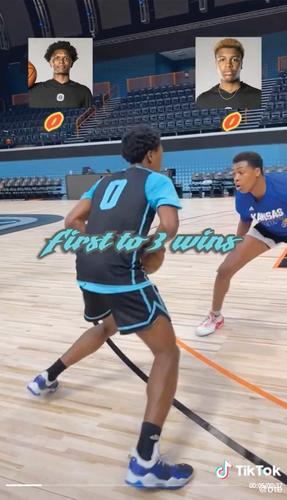
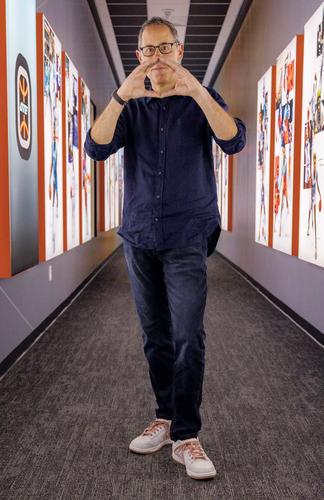
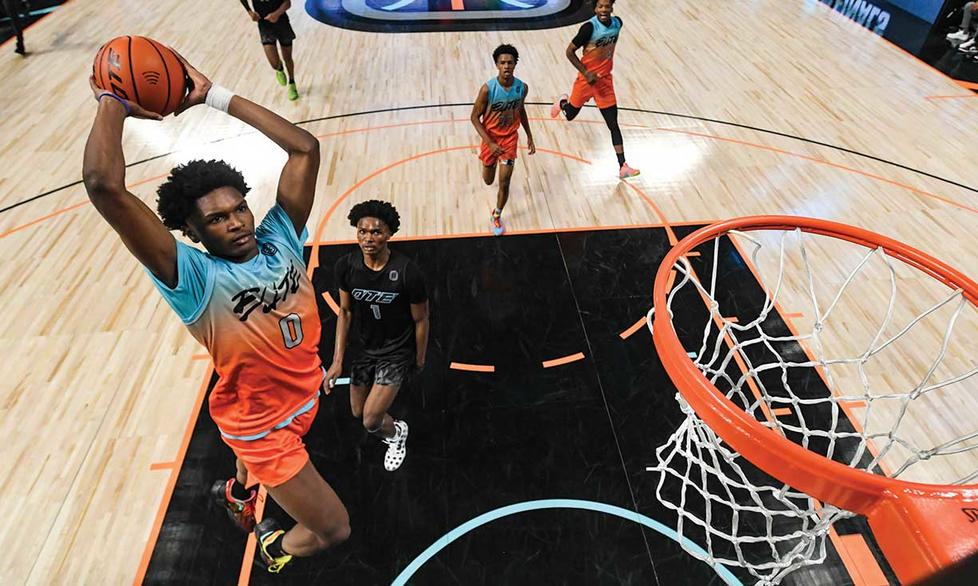
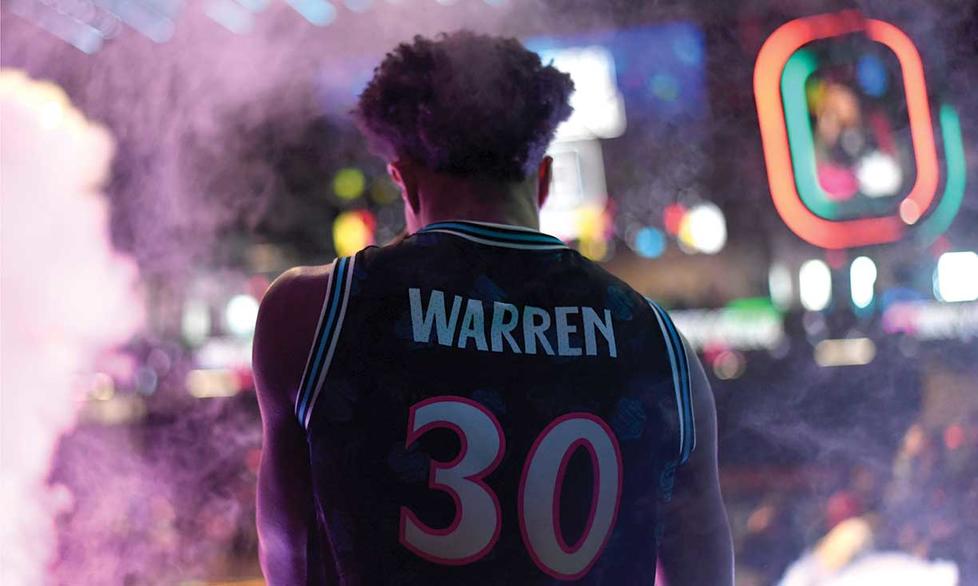
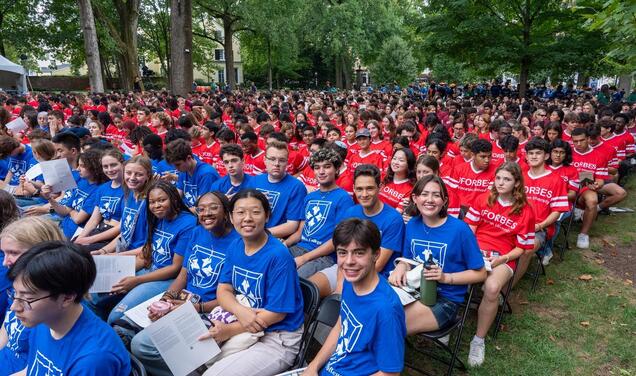
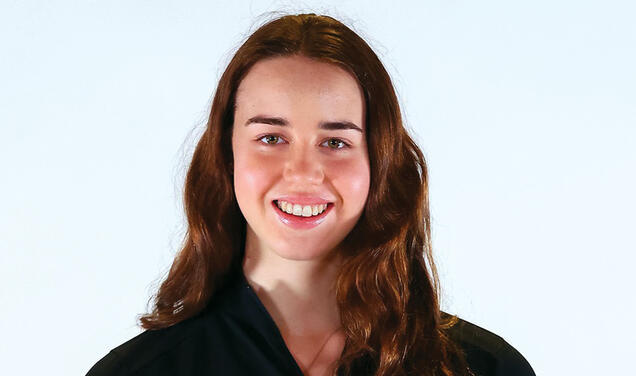


2 Responses
David N. Tobin *77
2 Years AgoJust What the World Needs...
Re: the Dan Porter ’88 cover story (“The Ball Is in his Court,” October issue). Just what the world needs: exhaustive coverage of a brilliant Princeton alum who thrills to the idea of dangling impossible dreams before countless adolescents, who themselves will never get anywhere near sports superstardom — but who will still covet $265 sneakers.
Your worshipful puff piece on the glories of 21st-century private enterprise is capped by the number of times your subject poses for the camera. Way to go, PAW!
Fred Churchill ’64
2 Years AgoTeam Sports, Individual Mentality
I certainly agree with E.B. Boyd ’89’s opening comment, “Dan Porter ’88’s latest project, Overtime, is changing the way teens play and watch sports and perhaps upending an entire industry” (“The Ball Is in His Court,” October issue). Overtime might very well be a financial 3-pointer as a startup success, but it seems to me it is likely to be a disincentive for participation in team sports, and that is not good.
If I can make $100k sending digital images of my amazing and entertaining dunk shots to Overtime, why risk not making the school team? Social media has already lured our grandchildren to the couch to text friends instead of talking to them and playing with them. Overtime would seem to encourage further isolation and reduce the life-learning experience of being a part of a sports team.